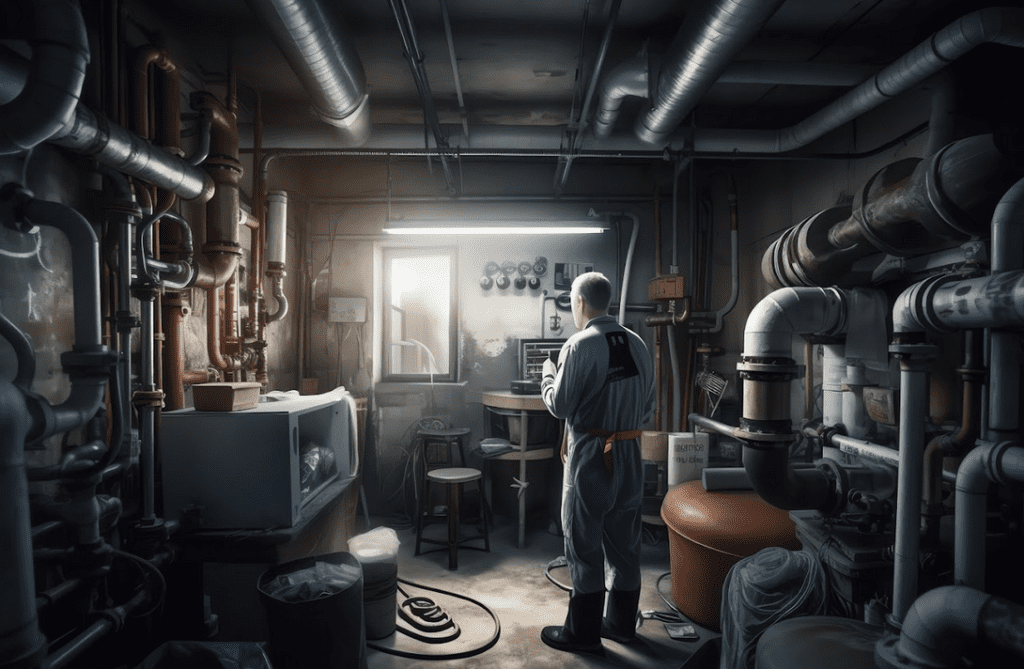The lifeblood of any building lies in its intricate network of pipes and valves. These silent protectors manage the movement of vital elements, such as water, gas, and air. This ensures your well-being, safety, and the essential operation of your building structures.
When it comes to construction and infrastructure, safety and efficiency rule the day. Luckily, valve solutions help make achieving both doable. If you’re wondering how you can achieve building safety and efficiency with valve solutions, here are a few tips.
1. Unleash The Power Of Precision
Imagine you’re in the office, pitching a new idea to your partners and investors, when suddenly a pipe bursts and transforms your office into a waterpark. This could be pretty frustrating. You’ll have to stop working to clean up and deal with the repairs.
With robust valve solutions, you can avoid such a crisis. An excellent example of credible building valves is ASCO Valves. They come packed with features like leak detection and automatic shut-off abilities. So when trouble strikes, sense the issue and instantly turn off the water flow before things get out of hand.
This kind of reliability and precision is what you need for your business and home. A few smart valves can prevent pipe problems from becoming a disaster. This saves you lots of money you’d otherwise spend on repairs alongside safety and efficiency.
2. Build With Intelligence
Modern valves are no longer standalone components. You can embed them with sensors and connectivity to the building management system (BMS). This turns each valve into an intelligent node, collecting real-time data.
They monitor flow rates, pressure levels, and energy use. They then transmit all that intel to the mothership BMS. You can then make informed decisions about repairs and renovation, depending on the collected data.
For instance, you can link smart pressure-independent control valves with your HVAC BMS. The valves control hydronic flow to optimize differential pressure throughout the system in response to the data. This prevents over-pressurization while saving pump energy.
3. Consider Energy Efficiency
With energy costs and carbon footprints ballooning, efficiency is everything these days. Luckily, valves can optimize energy use in buildings. For instance, pressure-reducing valves prevent overworking pumps, so they don’t burn out or waste power. It’s like a regulator keeping the flow in check.
Additionally, high-tech smart valves automatically adjust operations depending on weather and building occupancy. For example, when no one is at the office, the valves dial it down. This way, buildings never get more cooling, heat, or water than they need at a given moment.
The result is maximized comfort with minimized energy waste. And that saves on energy bills while reducing environmental impact. It’s a win-win situation for you and the environment
4. Invest In The Future
When strapped construction budgets collide, investing in next-generation valves can seem nonessential. This is because many constructors consider them small components in a massive building project. But progressive valves represent much more than mere drops in the cost bucket.
For instance, if you install poor-quality valves in the plumbing system, the valves may fail to detect pinhole leaks over time. A few weeks in, a small drip erupts in an upper-floor bathroom, gradually soaking drywall and steel for days before you can spot it.
The damage will be extreme by now: mold remediation, wall and floor replacements, and dried-out HVAC damage. The cost of repair may spiral into thousands of dollars. However, you can easily avoid these with efficient valve solutions.
In such a case, overlooking valve solutions forced far steeper consequences. Therefore, you should invest in resilient and preventative valve innovations to spare yourself relentless headaches. You’ll reap reliability, safety and sustainability, ultimately saving major sums.
5. Embrace Sustainability
When you think about valves, words like ‘high-performance’ probably come to mind first. You want state-of-the-art products that get the job done. But there’s a bigger vision emerging that progressive companies rally around.
The future for valves and other equipment lies in sustainability. This means product design promoting responsible resource use, manufacturing methods conserving energy and water, and innovative materials reducing carbon footprints.
Small changes can make a difference over the lifespan of essential components like valves. A good example is using water-saving valves that prevent costly leaks while championing conservation or upgrades that curb electrical usage in facilities.
The bottom line is that sustainability sells. Consumers want to buy or rent from builders who are aligned with ethical practices. Companies embracing this vision of the future will reap rewards as investor and consumer mindsets evolve.
Conclusion
Valves have come a long way from their simple beginnings. They’re so much more than passive pipes and fittings now. With advanced technologies and materials, value solutions make buildings safer, greener, and smarter. They automatically prevent catastrophic leaks before they even happen. So ensure you allocate enough finance toward these valves when creating your construction or renovation.






